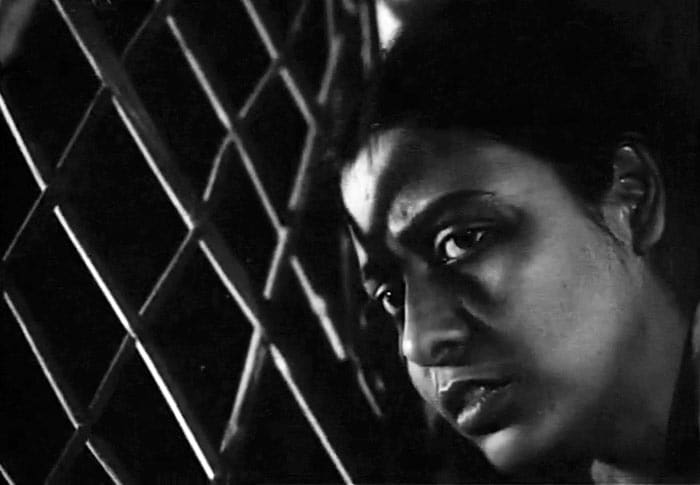It was both the director Ritwak Ghatak's fortune and his misfortune to come along in the wake of Satyajit Ray. Ray had just completed his landmark Apu trilogy when The Cloud-Capped Star first emerged, and Ghatak's film would come to be swept up and promoted internationally under a banner of New Indian Cinema, notionally far from Bollywood norms. In fact, there were clearly marked differences between the two filmmakers. Ray was the stronger storyteller, I think, but Ghatak had the greater eye and ear for composition, an even surer grasp of the sights and sounds cinema could make available: consider the opening scene here, in which a soaring tree extends up and across the frame.
More than this: Ghatak's characters weren't as close to Ray's as they were to Ozu's in Japan, though the filmmaker also worked in latent traces of Mikio Naruse's feminism and Antonioni's concerns as to the dehumanising effects of modernity. With their gabled front gate and career aspirations, the family at The Cloud-Capped Star's centre are representatives of a nascent Indian middle-class - the shock is the extent to which even this strata of society is seen as mired in poverty. After an ambling first half-hour - introducing us to the constituent members of this extended clan: the professor father and his wife, their two sons and two daughters - the narrative proper kicks in when the father and sole breadwinner (Bijon Bhattacharya) breaks a leg, forcing his eldest daughter Nita (Supriya Choudhury) to abandon her studies and find work.
The film keenly evokes this sense of drift. Ray appeared to impose order on all his narratives, but Ghatak ensures that events are at all points beyond his characters' control; this is a film of sudden revelations and nasty surprises. And where his contemporary was famously critical of the melodramatic Bollywood tradition, Ghatak has no issue with integrating storms, swoons and songs - the latter becoming a rare element in this universe that these characters can cling to and master. Throughout, the use of sound is tremendously bold and original: listen to what's happening in the scene where Nita discovers her boyfriend's infidelity, or for the whiplash effect at the end of the ballad her mother teaches her.
For all this, The Cloud-Capped Star remains a slumpy sort of classic, stuck as it is with a martyr of a heroine muddling through a despair of a plot, and I'm not sure I don't prefer the full-on exuberance of Bollywood to this halfway house of realism and melodrama, however singular it may be. The one area in which Ray and Ghatak were very closely matched in, however, was in the matter of complete empathy for their protagonists. Star's title derives from a letter its heroine receives from her boyfriend, suggesting she hides her light under a bushel - but, as Ghatak recognises, that's to say that she has a choice in the matter, and that budding intellectual promise stands a chance of blossoming when faced with the practicalities of this particular hardscrabble existence.
The Cloud-Capped Star is available on DVD through the BFI, and is available to watch online here.

No comments:
Post a Comment